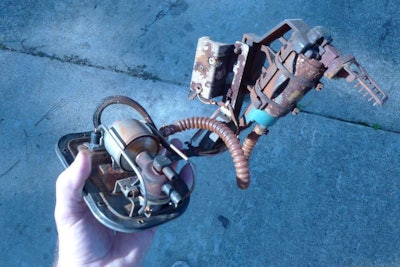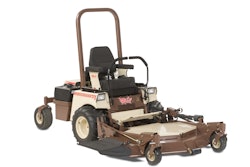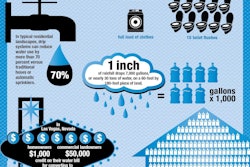
Looking at the fuel pump in the photo, how old would you say it is?
Its a nearly-new fuel pump from a 2003 Harley Davidson with just 11,000 miles on it.
How could that much corrosion happen on a motorcycle before it’s third oil change? According to my mechanic, it’s ethanol in our gasoline. To understand how this happens, you need to know how ethanol affects your fuel system.
Ethanol itself is not particularly corrosive. When the oil companies first started blending ethanol in gas, it corroded some rubber and plastic gaskets on some cars and equipment. Manufacturers figured it out and substituted new materials. The unlucky consumers whose equipment was ruined or whose fuel systems had to be replaced just took it on the chin as per usual with most government programs.
But that wasn’t the end of it.
Ethanol attracts waterWhen the two get together, they create the perfect environment to grow a type of bacteria called acetobacter. After getting drunk on their EPA-sponsored kegger in your gas tank, the acetobacter excrete acetic acid. And acetic acid is very corrosive.
If you’re refilling your gas tank every week or two, acetobacter don’t have time to grow a sufficient size colony to damage metal parts in your fuel system. But if your fuel sits for longer periods of time these microorganisms continue to multiply until your gas tank contains damaging levels of acetic acid.
After getting drunk on their government sponsored kegger in your gas tank, the acetobacter excrete acetic acid. And acetic acid is very corrosive. The news only gets worse. Ethanol is also now starting to show up in trace amounts in diesel fuel. And it does not bode well for todays fuel sensitive, high pressure diesel fuel injection systems. The source of this diesel contamination is unclear, but it is widespread. Given enough time and the right conditions, ethanol will do just as much damage to diesel fuel and storage systems as it does to gasoline engines and equipment.
I bought it used. The original owner had medical problems and parked the motorcycle for several seasons. It was otherwise in pristine condition and lovingly cared for with less than 9,000 miles on the odometer. It ran fine when I bought it, except the gas gauge didn’t work.
That should have been a warning sign. The gauge is part of the fuel pump system and sits at the bottom of the fuel tank. After about 2,000 miles of trouble-free riding, the bike suddenly started cutting out, completely and without warning, sometimes at 70 mph—a complete loss of power.
I took the bike to my mechanic and, after opening up the fuel tank, one look confirmed his suspicions. Ethanol. He says he sees the same problem all the time. And every mechanic he knows sees the same thing. It took us four months to find another fuel pump. Harley, it seems, can’t source a replacement for these fuel pumps, and we had to scavenge one from a parts bike on e-Bay. I don’t blame Harley, though. In 2003 nobody thought that E-10 would dominate 99 percent of the gas supply in the U.S. I always thought we’d have a choice, but there’s only one ethanol-free pump in our city of 100,000 people, and I have yet to see any ethanol-free pumps at any interstate gas stations.
When you store a vehicle or piece of equipment you should put gas stabilizer in the fuel tank. And with today’s ethanol-laced fuel that means a stabilizer that can stop the acetobacter that will otherwise accumulate in your tank. The previous owner of this Harley didn’t do this, but in the pre-ethanol days the worst that would happen is that your gas would go bad and have to be drained out.
Prior to E-10 you didn’t get the kind of corrosion that makes your fuel pump look like it was left out in the rain for 20 years. But that kind of corrosion is occurring all across the country to people who store their chainsaws, string trimmers, lawn mowers, motorcycles, and ATVs without ethanol-fighting gas stabilizers.
If you buy any used equipment or vehicles you’re running the risk of ethanol-induced failure. As with my Harley, it may not show up for a while either. And who knows where this problem of ethanol contamination in diesel is going to lead. To add insult to injury, the EPA wants to bump up the ethanol content of gasoline to 15 percent and may very well have it’s way soon.









